
Related
Topics
Guests
- A.C. Thompsoncorrespondent for Frontline PBS and reporter for ProPublica. His new investigation is titled Documenting Hate: Charlottesville.
When hundreds of white supremacists arrived in Charlottesville, Virginia, for a deadly “Unite the Right” protest last August, local authorities were unprepared for the violence that terrorized the city, largely standing back during bloody encounters between white supremacists and counterprotesters. One year later, we speak with investigative reporter A.C. Thompson on his work to track down and identify white supremacists from Charlottesville and other extremist rallies across the country. His investigation, “Documenting Hate: Charlottesville,” premieres tonight at 10 p.m. Eastern on PBS.
More from this Interview
- Part 1: Documenting Hate: New Doc Lays Bare the Violent White Supremacy that Exploded in Charlottesville
- Part 2: New Charlottesville Doc Exposes Neo-Nazi Leaders & Their Ties to U.S. Military & Weapons Contractors
- Part 3: Mother of Heather Heyer, Killed 1 Year Ago: Everyone Needs to Pick Up the Baton & Stand Against Hate
- Part 4: Portland Protest Shows New Far-Right Trend: Multiethnic Groups with Fascist Heroes Like Pinochet
Transcript
AMY GOODMAN: Soon we’ll be speaking with Heather Heyer’s mother, Susan Bro, who will be joining us from Charlottesville. But right now I want to turn back to President Trump last August speaking at the news conference he held in the lobby of Trump Tower, his residence here in New York, defending his decision to wait two full days before placing blame on white supremacists for the deadly violence in Charlottesville, Virginia. During the news conference, the president attacked the anti-racist counterprotesters, repeating his earlier claim there was violence on all sides.
REPORTER 1: You said there was hatred, there was violence on both sides. Are the counterprotesters to blame—
PRESIDENT DONALD TRUMP: Well, I do think there’s blame—yes, I think there’s blame on both sides. You look at—you look at both sides, I think there’s blame on both sides. And I have no doubt about it, and you don’t have any doubt about it, either. And—and—
REPORTER 1: But only the Nazis—
PRESIDENT DONALD TRUMP: And—and if you reported it accurately, you would say.
REPORTER 2: One side killed a person. Heather Heyer died—
REPORTER 1: The neo-Nazis started this. They showed up in Charlottesville. They showed up in Charlottesville—
PRESIDENT DONALD TRUMP: Excuse me. Excuse me.
REPORTER 1: —to protest the removal of that statue.
PRESIDENT DONALD TRUMP: They didn’t put themselves down as neo—and you had some very bad people in that group. But you also had people that were very fine people, on both sides.
AMY GOODMAN: So, that was President Trump. A.C. Thompson, talk about his response and the effect you believe it had.
A.C. THOMPSON: You know, for members of the white power movement, this was a sort of opening. They said, “Hey, the president is basically lending us some support. He’s not totally condemning us. He’s saying some of us are fine people.” And the folks that I talked to in that movement took heart in that. They felt inspired and excited about that. And they thought, you know, “This guy is on our side.”
AMY GOODMAN: So, you decide, in Charlottesville, you’re trying to figure out who the people are who are carrying the torches. Who were the people hitting, beating, going after those bystanders, also a smaller group of protesters who were directly confronting them, and the thousands that were also there?
A.C. THOMPSON: Right. You know, what we saw there was a police failure on the day, but we also saw what seemed to be a sort of ongoing, slow-moving law enforcement failure to bring the people who had been involved in these incredibly vicious altercations to justice and hold them accountable. And what we wanted to do was go figure out who were these people, what had they done, and sort of why had they eluded the authorities, what had happened in the intervening months. And so we set out to sort of identify these characters and identify specific crimes that we could sort of tell people, “Hey, look, this is something that happened, and nobody has been held accountable for it.”
AMY GOODMAN: So, were you just tracking the FBI, tracking the police, tracking these people?
A.C. THOMPSON: No, no, we were doing our own investigation. We were, you know, basically trying to figure this out all on our own. And for me, I was immediately drawn to a group called the Rise Above Movement. And they’re based in Southern California. I live in California. And they had been involved in violent protests up and down my state. And when a realized, “Oh, these guys were in Charlottesville, too,” I thought this is a group that I need to focus on, because they are a white power, street-fighting crew. They are capable of significant violence in sort of ways that some of these other actors aren’t. They’re trained fighters. And I had seen them involved in these really, really nasty attacks on both coasts.
AMY GOODMAN: That’s Rise Above Movement, R-A-M.
A.C. THOMPSON: That’s the Rise Above Movement, RAM.
AMY GOODMAN: RAM. So talk about Rob Rundo.
A.C. THOMPSON: So, Robert Rundo is the founder of the group. He’s a young man who grew up here in New York City. He was in Flushing, Queens. At the time when he was growing up, he ran like a small multiracial gang. They had an altercation with MS-13, the Salvadoran gang. Rundo ended up stabbing a member of that gang multiple times. He went to prison.
AMY GOODMAN: You show that on video in the film.
A.C. THOMPSON: It’s on video, yeah. We have the surveillance video. And he went to prison in upstate New York. And by the time he got out of prison, he was definitely a committed white supremacist. He ends up moving to California, and he starts up a new gang, the Rise Above Movement. And this is a political white supremacist gang.
AMY GOODMAN: And so, talk about Charlottesville and Rob Rundo’s presence there.
A.C. THOMPSON: So, he wasn’t there, but his people were there. And they were involved in multiple skirmishes that we saw. So, one of them was a guy named Mike Miselis. And Mike Miselis, we have documentary evidence of him hurling a full Coke can at counterprotesters. We believe he threw a rock at counterprotesters. He came with his hands taped up like a boxer, as if he was preparing for a fight. He was wearing a mouth guard like a boxer would wear. And we have video of him engaging in this altercation with counterprotesters, where he pushes a couple to the ground and starts punching them when they’re on the ground. His colleague, Ben Daley, enters into the fray and chokes and attacks two female counterprotesters, leaving them bloody. So this was a pretty nasty fight that we saw that seemed totally unnecessary and that we captured on video. Our goal was—when we first started doing this work, we didn’t know these guys’ names, we didn’t know what they had done. We were trying to identify them. And we said we want to know who these guys in this video are.
AMY GOODMAN: So, on July 5th, you reported a story about Michael Miselis for ProPublica headlined “He Is a Member of a Violent White Supremacist Group. So Why Is He Working for a Defense Contractor With a Security Clearance?” One day after your story was published, Michael Miselis lost his job. Talk about how you tracked him down.
A.C. THOMPSON: You know, so we had these photos and videos, and we had seen him at these rallies, but we didn’t know his name. We didn’t know who he was. Eventually, over many months, we were able to get a break that led us—that gave us his name. And we were able to corroborate that, yeah, this is the guy.
AMY GOODMAN: Talk about that break.
A.C. THOMPSON: We had a law enforcement source who said, “Hey, this is evidence that’s going to lead you to this guy,” and helped us lead us to that name. We went and saw Michael Miselis—and it’s in our film—and said, “Hey”—
AMY GOODMAN: And you confront him when he’s getting in his car, where?
A.C. THOMPSON: This is in Southern California, not far from the Northrop Grumman plant. And you can watch the video and decide what you think about it, but I was struck by the fact that he seemed kind of highly unsurprised to have somebody come and say, “Hey, what were you doing in Charlottesville last summer?” To me, he didn’t seem particularly shocked by that.
AMY GOODMAN: He immediately said, of course, “I wasn’t there.” But you kept pushing.
A.C. THOMPSON: Right. He said, “I wasn’t there,” and he denied being there, at the time. He has since—or his group has since gone back on that and acknowledged that he was there.
AMY GOODMAN: And talk about Northrop Grumman.
A.C. THOMPSON: So, Northrop Grumman at first said nothing. We kept asking them, “Hey, what’s the story with this guy? How did he get a security clearance? What is he doing working for your company?” And they said nothing to us. We made repeated queries to them about this. Then, when we published our story, they issued a statement saying, “Hey, we don’t approve of this. We’re investigating. We’re concerned about this.” The CEO of the company at the time sent out a bulletin to everybody on the staff, an internal bulletin, saying, “This is not good. We’re not down with this.” And eventually we were alerted that they had been—that he had been let go from the company.
AMY GOODMAN: And when was that?
A.C. THOMPSON: The day after, about 24 hours afterwards.
AMY GOODMAN: And what other images did you—did you have images of him at other locations?
A.C. THOMPSON: We had video of him in Berkeley, and we had video of him in Charlottesville, both times in these violent altercations and really looking like he was prepared for violence, so hands taped up, goggles, a mouthpiece in, that kind of thing.
AMY GOODMAN: And when you talk about these protests in California, for those who are not familiar with them, know Charlottesville because, well, a person died there—
A.C. THOMPSON: Right.
AMY GOODMAN: —Heather Heyer—and, again, in a few minutes we’ll be talking with her mother. But you had seen this coming. Talk about the series of “Unite the Right” rallies that were held throughout California.
A.C. THOMPSON: Yeah, so there was—in 2016 and 2017, there was a whole string of far-right and racist rallies that occurred throughout California, and almost every one of these turned into a bloodbath. So, you had a Klan rally in the spring of 2016 in Anaheim; three people were stabbed. You had a Nazi rally in Sacramento in 2016, the summer; seven people were stabbed. And then you had conflicts in Huntington Beach, a Trump march, where the Rise Above Movement first made its presence known, and there were numerous altercations. A journalist from the OC Weekly newspaper was attacked there by the Rise Above Movement.
And then you had Berkeley. And the Berkeley battles, the Berkeley demonstrations, were incredibly violent, sort of street-fighting, political-warfare-in-the-streets events that went on through the spring, that Rise Above Movement was present, Nazi groups were present, other white supremacist groups, and also sort of less extreme pro-Trump groups were there. But these were really highly, highly violent scenarios that were poorly policed, where they got out of control and just spun on for hours.
AMY GOODMAN: You know, earlier I asked you if you were tracking the FBI tracking them. But, I mean, I think what clearly comes through in your documentary is your sort of utter surprise that you felt like you were out there on your own tracking these people.
A.C. THOMPSON: Right, exactly, like that was our—that was our sense for much of the work that we were doing, was that there was not a lot of interest from law enforcement in these characters. I believe that has possibly changed now. But while we were doing our work, it wasn’t like there was an investigative trail left by law enforcement for us to follow.
AMY GOODMAN: I want to ask you about the U.S. Marine Corps lance corporal who you identify as a neo-Nazi and assailant during last August’s bloody white supremacist rally in Charlottesville, Virginia.
A.C. THOMPSON: So that’s Vasillios Pistolis. And Pistolis is, I would say, a fascinating and disturbing character. At the time of the Charlottesville rally, he was a member of what I would say is the most extreme, most dangerous white supremacist group, and that’s the Atomwaffen Division, which is a group of committed domestic Nazi terrorists whose goal is to start a race war, overthrow the U.S. government and establish a fascist state. And they aim to do that through guerrilla warfare, assassination and political terrorism. So, at the same time Pistolis is serving in the Marine Corps, he is in a group that is dedicated to overthrowing the government through force of arms.
AMY GOODMAN: Now, Atomwaffen, A-T-O-M-W-A-F-F-E-N?
A.C. THOMPSON: Right. So that means—in German, that means nuclear weapons, and then with the English word “division.” So it’s sort of a nod to the Third Reich.
AMY GOODMAN: And talk about the encrypted chats that they have online. Talk about Discord.
A.C. THOMPSON: Right. So, working with my colleagues, Jake Hanrahan and Ali Winston, we were able to get access to 250,000 chat messages sent privately by the group. And they sort of really lay out the group’s ideology, their intentions and sort of their menace. You know, some of the chat messages that we got included people talking about specific plans to blow up the power grid in Western states. They talked about plans to manufacture weapons. They talked about training camps that they were doing in the Nevada desert, in the Midwest, training people in hand-to-hand combat and guerrilla warfare.
AMY GOODMAN: You took your information back to Emily Gorcenski—
A.C. THOMPSON: Right.
AMY GOODMAN: —in Charlottesville. And explain what you found and what she had been looking for, as well.
A.C. THOMPSON: Right. So, Emily and I had been messaging one another since shortly after the Charlottesville event. And she was trying to figure out, “Hey, who attacked me on the night of the 11th?” And we had some notion that perhaps it was the Rise Above Movement. We knew that they were there and they were close to her. Maybe it was somebody else. And eventually I come across, in these chat logs, Vasillios Pistolis talking quite explicitly about attacking Emily, as well as attacking many other people. He said—
AMY GOODMAN: But wait, this is really important. He didn’t just say, “I attacked this person.” He talked about her, Emily Gorcenski.
A.C. THOMPSON: Right, right. That was what was stunning to me. That was what—like, you never see that, right? It’s like somebody has just offered you up the evidence right there. And I think it’s because Emily had been live-streaming that, and so people started—on the far right, started knowing her name. And then he wanted to take credit for that assault.
And from everything we can tell, we know he was there. We have video of him entering that fray. Emily is not entirely sure if the kick that he launched actually hit her. But she knows, and we can see from the video, that he propelled himself into that melee and that basically the violence escalated from the time that he jumped in. He also, you know, later said—we have video of him beating somebody with a wooden flagpole the next day. And he posted these messages saying, “Hey, I split”—I think he said, “I split three skulls today, with virtually no damage to myself. You know, I had so much fun at 'Unite the Right.'” So he was a guy who was bragging about the violence he engaged in. You know, he posted photos of himself, in these private chats, attacking people.
AMY GOODMAN: So talk about how you tracked him to his employer.
A.C. THOMPSON: So, that’s one of the fascinating things about these chat logs from the Atomwaffen Division, is you start looking at them, and you realize, oh, there are several people who are active-duty or former military in this group, people that have good combat training, people that know their way around weapons. And we thought, let’s finally go—when we had enough evidence—go to the Marine Corps and say, “Hey, look, this is what we know about this guy who works for you. This is”—
AMY GOODMAN: And where does he work for them?
A.C. THOMPSON: At that time, he was a lance corporal at Camp Lejeune down in North Carolina, which is a place that’s actually had sort of persistent problems with white supremacists over the years.
AMY GOODMAN: This Atomwaffen leader.
A.C. THOMPSON: Yeah, he’s down there. He’s on base, working with the Marine Corps down there. He was a water purification specialist at that time. And we said, “Look, here’s photos. Here’s video. Here’s what we’re going to say. We need to know if you guys have taken action against this guy at all. Do you know about him? And what should we know about him?” you know, and put that out to them.
AMY GOODMAN: And what did they say?
A.C. THOMPSON: What we found out was that there had already been an investigation into Pistolis by military investigators. And apparently the investigation stalled or was dropped or didn’t go somewhere. But there had been an investigation, for at least six months, into his conduct. In the military, you cannot be a member of an active white supremacist group. That is against military regulations in all branches of the service. You also—you know, engaging in criminal activity, like assaulting people, is also barred. But for some reason, the Marine Corps had not acted on the information that it had, that it had had since before we talked to them. Six months before, they were tipped off about this. And they had allowed him to remain in the corps.
AMY GOODMAN: So you have all the evidence. You have the video. You have him beating—
A.C. THOMPSON: Right.
AMY GOODMAN: —Emily Gorcenski and others.
A.C. THOMPSON: Right. And at that point, it seems like they took more aggressive action. So they ended up court-martialing Vasillios Pistolis, and they recently separated him from the service, which is jargon to say that they have ousted him from the service. But I would point out that the court-martial that they did with Pistolis was basically a misdemeanor court-martial. And it just said, “Hey, you weren’t following orders. You were misleading your superiors,” and gave him 30 days in the brig. And then the discharge that they went through him, I would say, from what I can tell, is not a particularly severe sort of discharge, because those things are graded. You know, an other-than-honorable, a dishonorable discharge, these are serious. And I’m not sure that that was the kind of thing that he got.
AMY GOODMAN: Because it just happened.
A.C. THOMPSON: It just happened. And like I said, this was basically a misdemeanor court-martial that he got.
AMY GOODMAN: And you tracked him down. You actually talk to him in the documentary.
A.C. THOMPSON: I actually talked to him. I emailed him first at his email, which included the numbers 88, which is a code for “Heil Hitler” among white supremacists. And he gave me a bunch of different stories. You know, he gave me—he said, “Look, I have 'alt-right' beliefs.” He suggested like, “Yes, I am a white supremacist.”
AMY GOODMAN: He had denied he was in Charlottesville.
A.C. THOMPSON: But he denied he was in Charlottesville.
AMY GOODMAN: At first.
A.C. THOMPSON: At first. And then I said, “Look, I’ve got videos of you. I’ve got photos of you. I’ve got chat logs where you’re talking about this stuff. It sure looks like you. I don’t know—you know, you don’t have a body double that I know of, so explain this to me.” And he just basically said, “Hey, you know, how about you don’t publish this, and somewhere down the road I’ll give you information about other white power figures, and that will help your career, because you probably don’t want to work at ProPublica for the rest of your life?” And I said, “No, thanks. I think we should do this story.”
AMY GOODMAN: We’re going to break, and, A.C., I want to ask you to stay with us. But when we come back, we’ll also be joined by Susan Bro, the mother of Heather Heyer, the 32-year-old anti-racist activist who was run down by a white supremacist a year ago and killed. A.C. Thompson is correspondent for the Frontline PBS documentary that—and reporter for ProPublica. His investigation, Documenting Hate: Charlottesville, will premiere tonight around the country. Stay with us.

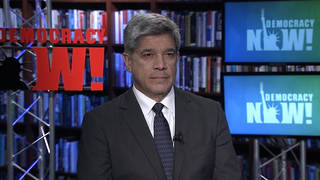
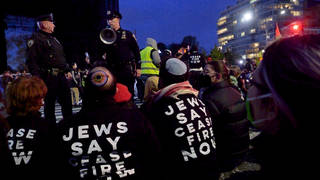
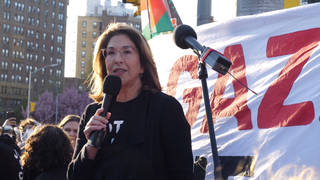
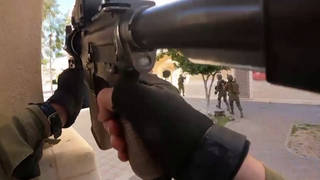





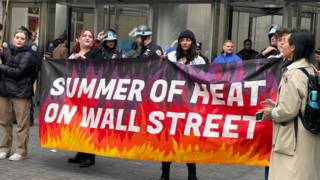
Media Options